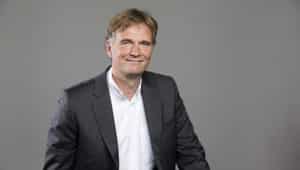London (HedgeNordic) – Excalibur was named after King Arthur’s sword, and co-founder, Thomas Pohjanen, argues that its objective – delivering average returns of 4-6% per year with low downside risk – is as difficult as pulling a sword out of a stone. But Excalibur has risen to the challenge, had only two losing calendar years in 21 years and has a strong positive skew: its up months and years are bigger numbers than its down months and years. Over this period, a number of other fixed income hedge funds have shut down after unexpected losses.
“This approach can be like picking up pennies in front of a steamroller. Our leverage is relatively conservative.”
The Excalibur return profile is rather like a tortoise that crawls along most of the time and occasionally speeds up by putting on a set of roller-skates, often when option positions pay off. This is very different from some fixed income arbitrage strategies, which appeared similarly steady for multiple years before falling off a cliff and incurring large losses in 2021, similar to what happened also in 1998 or 2008. Long periods of tranquil markets, recently due to central bank policies, encourage some managers to increase leverage in order to magnify diminishing spreads and risk premia into reasonable returns. “This approach can be like picking up pennies in front of a steamroller. Our leverage is relatively conservative,” argues Pohjanen, who headed fixed income market making at Nordea, where he worked with Bjorn Suurwee and also ran a proprietary trading book, before the duo set up Excalibur.

The normalization of bond market volatility in 2021 and 2022 has revealed who is naked when the tide goes out. It has exposed the weakness of some approaches in three main ways: rates have spiked, risk premia have widened and yield curves have flattened (and even inverted in some areas) confounding many managers who had expected steeper yield curves.
Rate rises and risk premia in historical perspective
The speed of interest rate rises between mid 2021 and early 2022 has not come as a great surprise to Pohjanen. Though he did not have precise interest rate forecasts, the strategy was positioned for the direction of travel. Over a 35 year career in market making, proprietary trading and hedge fund management, Pohjanen has seen even larger interest rate spikes before. In 1994, when US interest rates doubled from 3% to 6%, and the fourth Eurodollar future spiked by 450 basis points. Or for that matter in 2004-2005, when the same contract increased by 250 basis points. So far, as of mid-March 2022, Pohjanen has only seen 200 basis points of increase as a comparison.
He is also no stranger to blow outs in risk premia. Working in the US between 1989 and 1993, he witnessed declining risk premia that ultimately led to the Savings and Loans crisis and a major paradigm shift. He also saw similar phenomena in 2007-2008 around the GFC.
Getting ahead of the curve

Official reported headline inflation is in fact at the highest levels of Pohjanen’s career, and this is the direct cause of rising interest rates and rate expectations. The team does not directly trade inflation instruments, but is mainly active at the short end of the interest rate curve, which has been somewhat slow to react until quite recently. Just as most credit managers view credit ratings agencies as being “behind the curve”, Pohjanen aims to use his data analysis to anticipate central banks’ policy reaction functions. It seems clear that the US Federal Reserve continued describing inflation as “transitory” for rather too long before admitting that it could become persistent in late November 2021. And the ECB and Sweden’s Riksbank have also been late to recognize broader inflation pressures. “As late as February 2022, the forward curve was pricing Swedish rates at zero until 2024. We had been disagreeing with the short end of the curve for some time. It is starting to reprice now and we are making good profits in March. Central banks want 75-80% certainty that they are right, but we can apply thorough and methodical analysis to be ahead of them,” says Pohjanen.
“As late as February 2022, the forward curve was pricing Swedish rates at zero until 2024. We had been disagreeing with the short end of the curve for some time.”
The team build trade structures with a hockey stick return profile, using instruments including swaps, swaptions and options that provide some long volatility exposure. The aim is for losses to be limited to premium paid while profits could be many times greater. The best calendar years have seen the strategy deliver high single to low double-digit returns.
Nimble and flexible trading
As well as expressing directional views on rates, the team at Excalibur is actively trading around positions and varying risk levels to accentuate the upside and truncate the downside: “We hate to lose money and have only one third negative months. Timing is the real craftmanship of running a well balanced fixed income fund, as markets will over-react in both directions and bear markets can see violent rallies, which can whipsaw investors. The analytical toolbox blends fundamental with some technical analysis, which is used to fine tune entry and exit points. Tops and bottoms are for fools, but we strive to be as close as possible to them”.
“We hate to lose money and have only one third negative months. Timing is the real craftmanship of running a well balanced fixed income fund, as markets will over-react in both directions and bear markets can see violent rallies, which can whipsaw investors.”
The teams initial response to the Russian invasion of Ukraine was simply to reduce risk: “war is risky and hazardous. We do not know which weapons will be used or which battles will be fought. But by March we dialed some risk back up, having judged that the conflict was probably not going to derail the global economy and would probably not escalate from a local into a global conflict”.
Performance has been positive in March, but risk levels are not as high as after the Covid crash: “We are still cautious because we do not know what Putin may do, which may derail any strategy based on normalized higher interest rates”.
Relative value and directional trades
Profits do not only come from accurate trading calls. There can also be some positive carry, which sometimes comes from relative value trades. Excalibur mainly trades US, Swedish and German interest rates, but will occasionally venture into peripheral European government bond markets, perhaps trading spreads between Italian and German government bonds: “this spread blew out after the Covid crisis and we expected the ECB would take action to reduce the spread as part of its policy transmission mandate. This year, the spread has also widened a little bit, but not as much as in 2020. Our main focus this year is directional rather than relative value trading”.
“Our main focus this year is directional rather than relative value trading.”
The central bank climate helps to determine the balance between relative and outright trades: “generally we do more relative value trading when central bank policy is steady, while shifts in central bank policy between hawkish, neutral and dovish will lead to more directional trades. Policy divergence can however also strengthen the case for relative value trades – and currently the US is ahead of Europe in the business cycle”.
The strategy also trades corporate credit, and has started to add exposure now that spreads are widening to more attractive levels.
Liquid and scalable
Excalibur has seen some inflows take assets to SEK 640 million, but this remains about 90% below peak assets of SEK 6,000 million, which seems surprising given the long term consistency of returns. After the Great Financial Crisis in 2008, Excalibur was used as an ATM by investors who were nursing losses and lock ups in other funds. And then after a flat period of performance, some investors redeemed from the “tortoise” Excalibur and invested in “hares” such as private equity and real estate, which have clearly benefited from the extended period of very low, zero and negative interest rates. Excalibur could profit from higher and more volatile interest rates, and is a liquid strategy, which could easily scale up all trades and run much higher levels of assets.
This article features in HedgeNordic’s “Nordic Hedge Fund Industry Report.”
